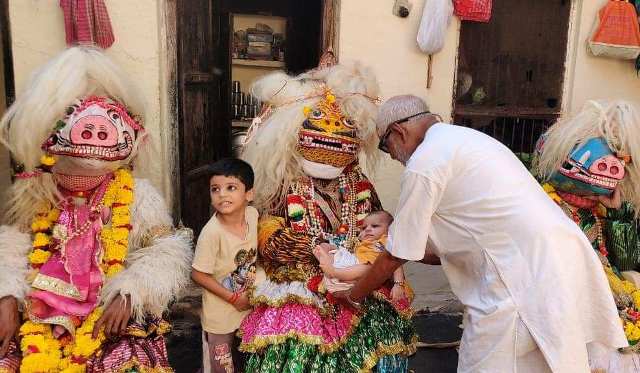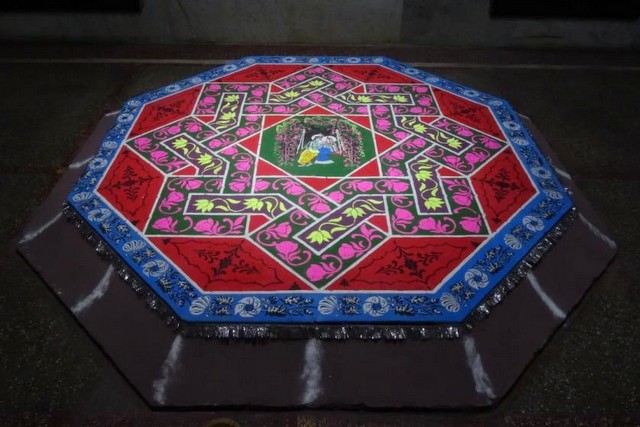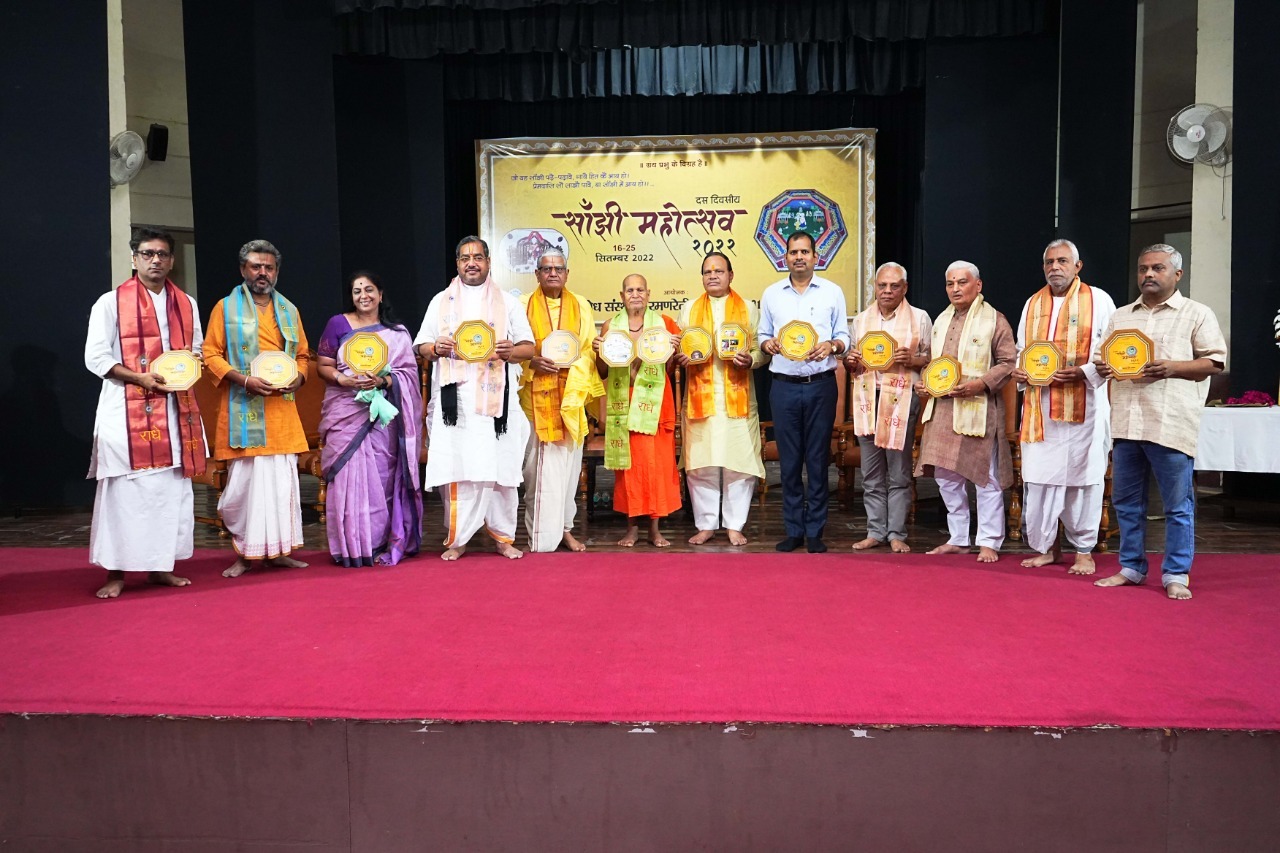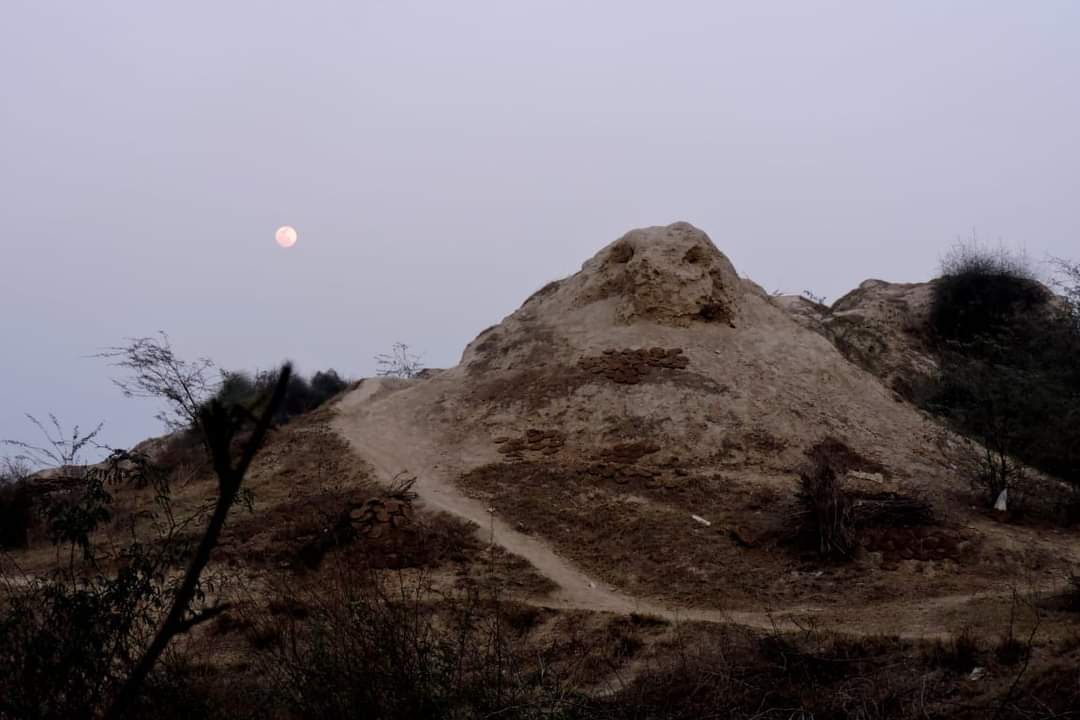2023. 05.05 (Vrindavan Today News): The Birth anniversary of Lord Narasimha, the fourth incarnation of Lord Vishnu, was celebrated with great zeal and enthusiasm across Braj. The festival, also known as Narasimha Jayanti or Narsimha Prakatyotsav, marks the day when Lord Narasimha appeared in the form of a half-man and half-lion to protect His devotee Prahlad and killed the demon king Hiranyakashyapu.
Hiranyakashipu received a special benediction from Lord Brahma that he could not be killed by any human being, demigod or animal or any other entities; he could not be killed by any kind of weapon or during either the day nor night. So, the Lord appeared in half-man half-lion form and killed Hiranyaksahipu with His nails at twilight, thus avoiding all the barriers that Hiranyaksashipu thought would protect him.
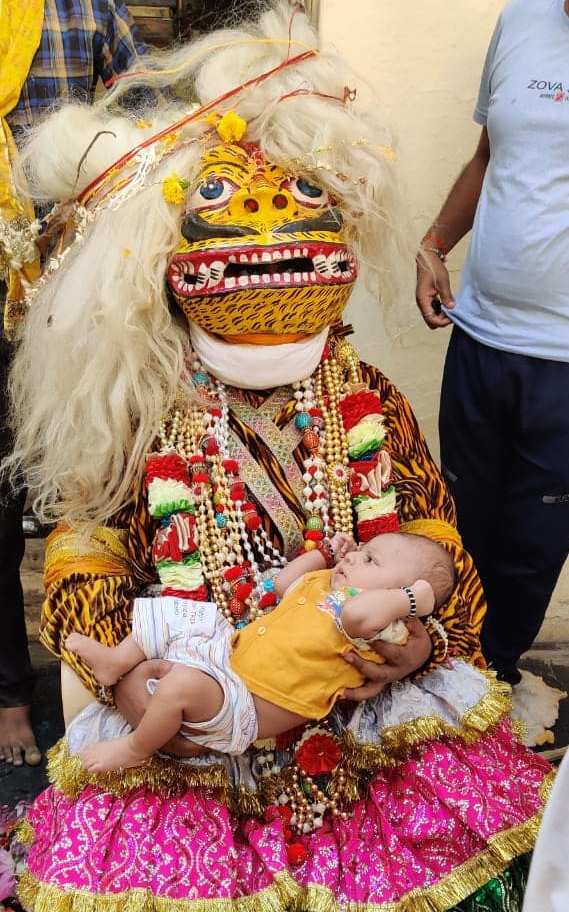
Various religious rituals were organized in different ancient temples and shrines in Mathura and Vrindavan. In Mathura, the Dwarkadhish temple had made preparations for the festival, with morning darshan and evening Uthapan, Bhog Sandhya Aarti being performed as usual. After that, Narasimha Leela was organized. The devotees came in large numbers to participate and have darshan of Lord Narasimha.
Panchamrit Abhishek, Shringar, and Bhog were performed at 12 noon in the ancient Narasimha Temple located in Gali Satghada, followed by Narasimha Leela enacted in the evening. In the Manik Chowk temple, Abhishek was performed with Panchamrit by Sevayat Mukesh Kumar Chaturvedi in the afternoon. In the evening, the phool bangla (decoration with the flowers) was made and 56 bhogs were offered.
In Vrindavan, the Narsimha Chaturdashi was celebrated at the Narasimha Mandir in Atkhamba area, Keshi Ghat and Gopinath Bazar. Devotees around the world, and especially in the sacred town of Shri Shri Radha Krishna, fondly remember this pastime and celebrate it with great enthusiasm.
Narsingh lila is one of the most loved lilas in Vrindavan. The festival is celebrated in an elaborate way at Narsingh temple in Atkhamba, Varah ji temple in Chipi Gali, the Radha Krishna temple in Keshighat and Ramji Dwara in Pratap Bazaar.
These temples begin their preparations several weeks before the festival and celebrate the occasion with great zeal and enthusiasm. On this auspicious occasion, the temples are abuzz with activity starting from early morning, with various offerings of aarti, bhoga etc. At noon, abhishek is performed with panchamrit and various herbs and fragrances, sandalwood paste etc. The abhishek offering is then followed by a variety of food offerings.
In the evening, special darshan of Lord Narsingh is arranged and devotees flock to the temples to enjoy renditions of the Lord’s pastimes enacted by the artists of various lila mandali (performance troupes). The artists thrill the crowds with their elaborate, handmade masks and costumes designating them as Lord Narsingh, Varah Dev and other demigods including Ganesh, Hanuman, Makardhwaja etc.
Each performer is required to wear mask that is put in place with cotton and fixed onto a pagdi (turban). The performers where bagalbandi (traditional jacket or kurta) in different colours – yellow for Narsingh Dev, red for Ganesh ji and green for Varah Dev along with chamar (fan), pajamiya (pajamas), ghaghriya (flared knee length skirt), bajubandh (armlet), chunari (stole), ghungroo(anklets), socks and gloves. Several makeup artists specializing in this kind of make-up and hair styles as well as costume helpers are engaged to create a traditional look and get the artists ready for the swaroop lila.
The proceedings begin with Ganesh ji’s aarti. Ganesh ji, in red costume and mask, begins the procession, followed by Varah Dev, Hanuman and Makardhwaja. Different pastimes are enacted on the streets and the procession is taken to several places to give devotees in different places the opportunity to see the performances.
As the time of sunset approaches, an artist dressed in white kurta-pajama and holding a mace can be seen parading as Hiranyakashipu. Soon after Hiranyakashipu’s appearance, Lord Narsingh appears from a special pole that splits into two parts. A mock-battle ensues with the two attacking each other using swords etc. A young child is engaged to play the role of Prahlad Maharaj and he stands with a garland in his hand, ready to put it around the neck of the victorious Supreme Lord.
Narada Muni is also represented and the surroundings echoe with the sound of bells, drums and conch shells. The atmosphere becomes charged as the crowd cheers and sings the praises of the Lord. Fruits, sweets etc. are distributed and various traditional dances are performed. Crowds gather and are enthralled to see the performance and absorb the atmosphere of revelry and religious fervor.
Apart from the temples and street parades, devotees also celebrate the festival in their homes by serving their personal deity of Lord Narsingh Dev with the best of offerings. Many fast until sunset while engaging in all-day kirtan and katha.
According to the Narsingh Puran, it is highly beneficial for devotees to read Narsinghcharya, Narsinghkalap, Narsinghparijata, Narsinghkawach, Narsinghsahastra namastrotra, Beejakshara mantra etc. to elevate themselves to the platform of devotion and seek mercy and blessings from the Lord.
The Narsingh lila of the Lord not only portrays His reciprocation of pure love but also shows that, even a person of lower birth can attain higher noble qualities and pure love of the Lord especially if there is an environment that is conducive to nurturing love for the Lord. Not only this, even an unborn child, while still in the womb, is able to imbibe good virtues – by hearing the name, form, qualities and pastimes of the Supreme Lord.
The festival generated a lot of excitement among the devotees, who had made all the necessary preparations to celebrate the birth anniversary of Lord Narasimha.
Narasimha Jayanti is an important festival for Hindus, who believe that Lord Narasimha symbolizes the victory of good over evil. The festival not only celebrates the appearance of Lord Narasimha, but also represented the triumph of righteousness and devotion over tyranny and arrogance.


